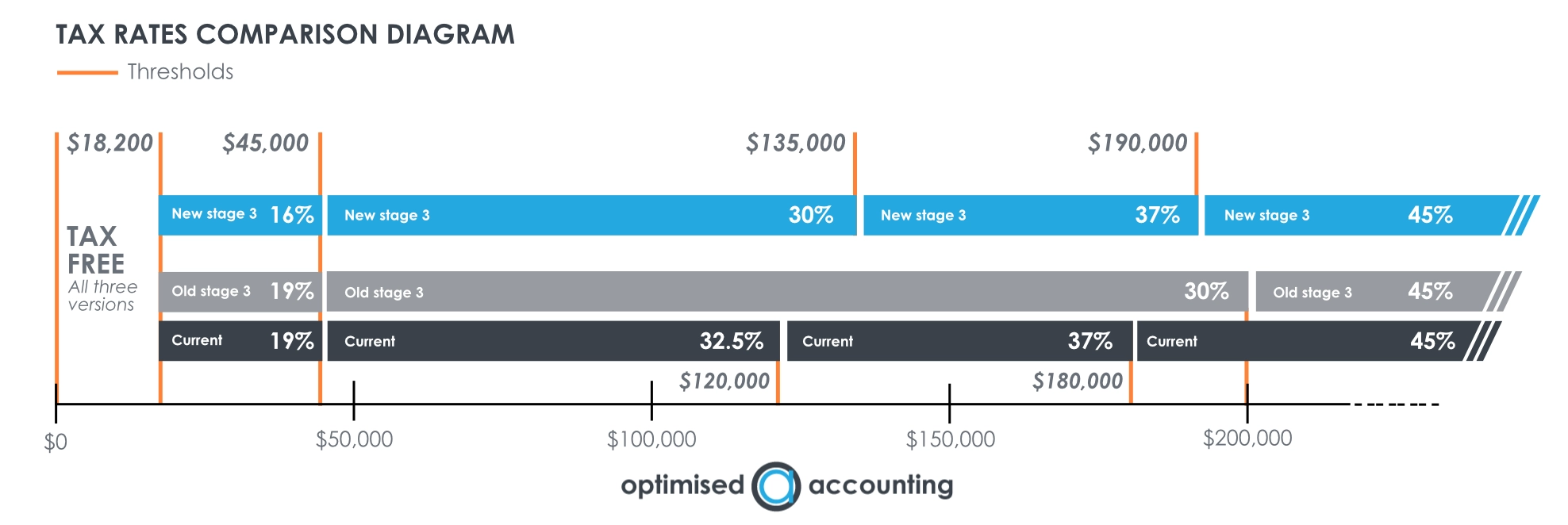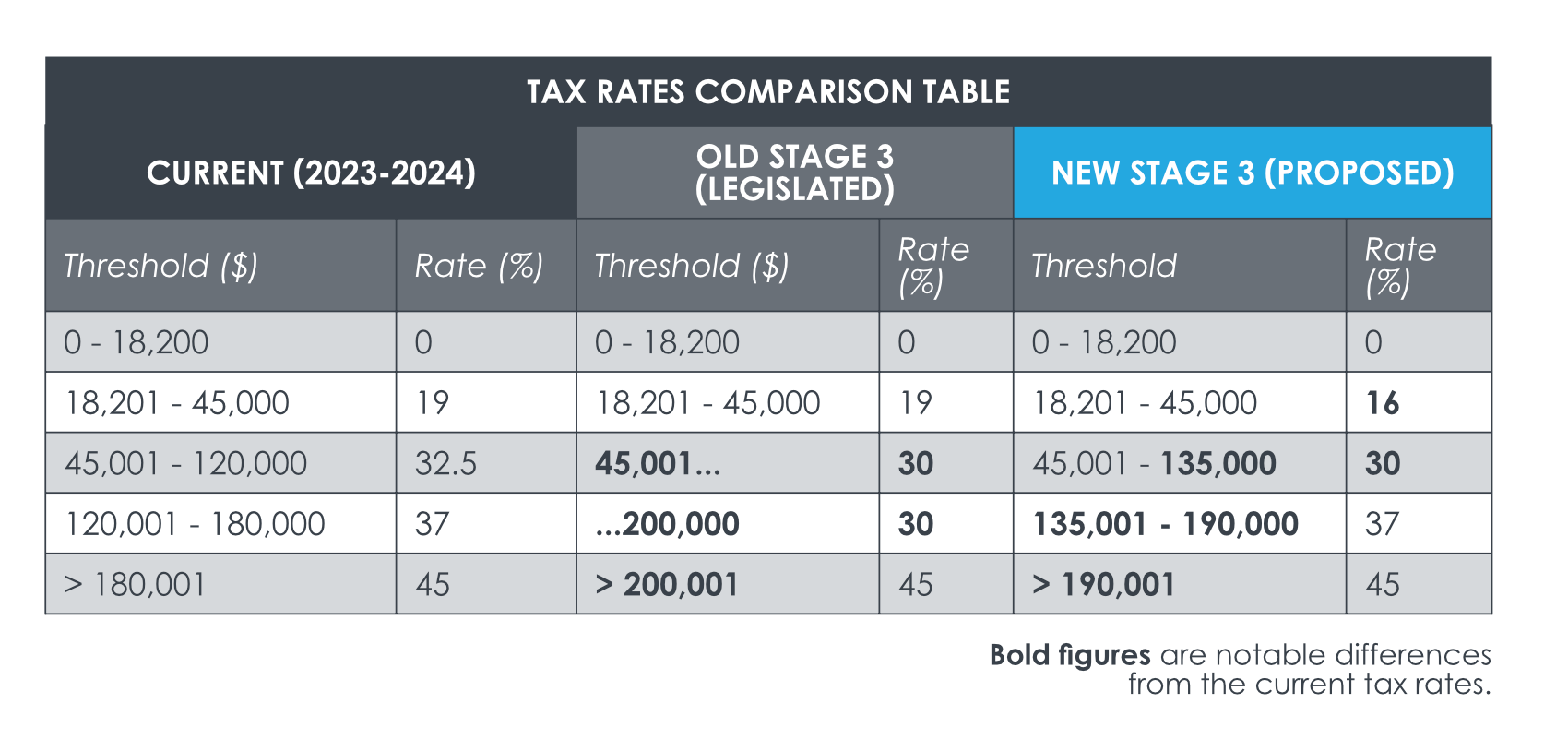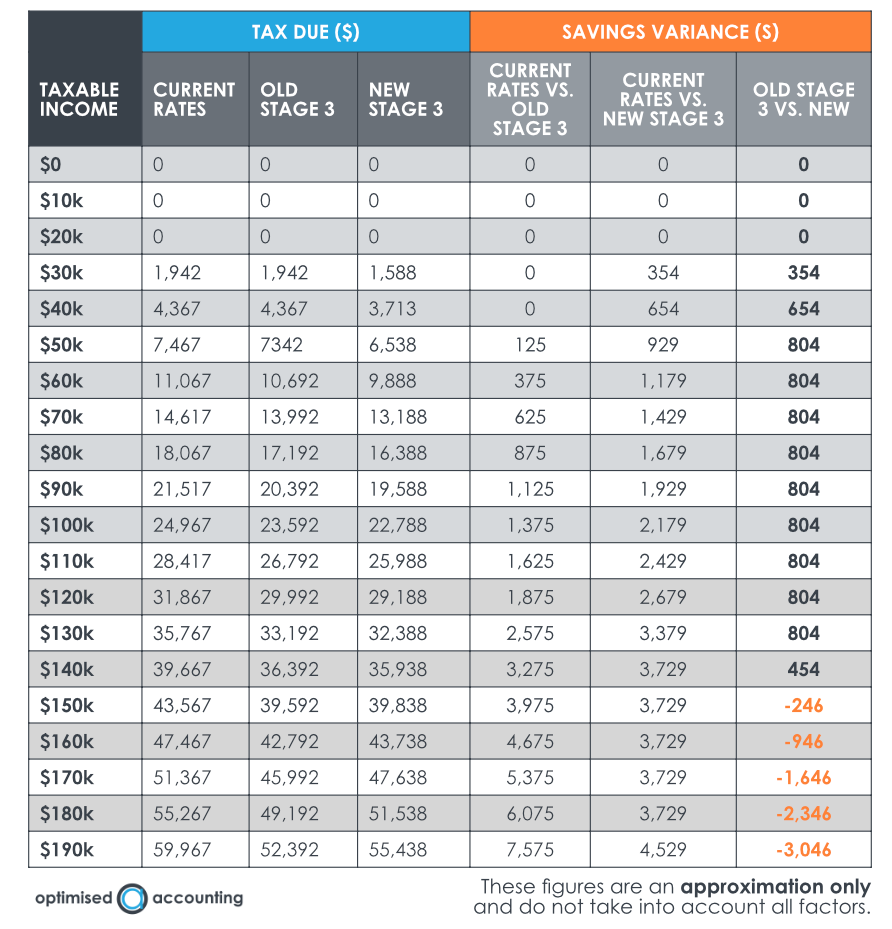
Finally bringing down the knife: the Federal Government released a proposal to realign and redistribute personal income tax cuts legislation, to commence on 1 July 2024, for the 2025 financial return year.
[Edit 14th March 2024]: on the 27th of February, the government passed these newest changes to the Stage 3 tax cuts.
Australians have been waiting for greater certainty on their tax among increased costs of living, the loss of the low-to-middle income tax offset last year, and inflation running amok.
Relative to the current Stage 3 plan, the proposed redesign will broaden the benefits of the tax cut by focusing on individuals with taxable income below $150,000. If enacted, an additional 2.9 million Australian taxpayers are estimated to take home more in their pay packet from 1 July.
It’s not how Stage 3 of the 5 year plan to restructure the personal income tax system was supposed to work, but a sharp escalation in the cost of living has reshaped community sentiment. As the Prime Minister said, “we are focused on the here and now” and by default, not on long term structural change.
The redesign will increase Government revenues from personal income tax by an estimated $28 billion to 2034-35 as bracket creep takes its toll.
What will change?
As an overview, here are a diagram and table representing the bracket changes:
Under the proposed redesign, all resident taxpayers with taxable income under $146,486, who would actually have an income tax liability, will receive a larger tax cut compared with the existing Stage 3 plan.
For low-income earners, the two lowest brackets receive a reduction, which means they’ll be paying less tax on their income:
- 19% tax bracket will become 16%.
- 32.5% tax bracket will become 30%.
For middle-income earners, the minimum income in two brackets are increased, meaning you don’t cross into the next bracket until later:
- $120k in the 37% threshold will become $130k.
- $180k in the 45% threshold will become $190k.
However, an individual earning $200,000 will have the benefit of the Stage 3 plan slashed to around half of what was expected from $9,075 to $4,529. There is still a benefit compared with current tax rates, just not as much.
For tax planning purposes, for those with taxable income of $150,000 or more, the redesigned Stage 3 tax cuts offer less planning opportunity than the current plan.
There is additional relief for low-income earners with the Medicare Levy low-income threshold increasing by 7.1% in line with inflation. It is expected that an individual will not start paying the Medicare Levy until their income reaches $26,000 and will not pay the full 2% until $32,500 (for singles).
While the redesign is intended to be broadly revenue neutral compared with the existing budgeted Stage 3 plan, it will cost around $1bn more over the next four years before bracket creep starts to diminish the gains.
How does it affect me?
Here’s a breakdown, in increments of 10 thousand dollars earned annually, approximately how much you may be saving (or paying) in the new Stage 3 in comparison to the previous legislation:
Examples:
- An individual with taxable income of $40,000 will receive a tax cut of $654, in contrast to receiving no tax cut under the current Stage 3 plan (but they are likely to have benefited from the tax cuts at Stage 1 and Stage 2).
- An individual with taxable income of $100,000 would receive a tax cut of $2,179, which is $804 more than under the current Stage 3 plan.
How did we get here?
First announced in the 2018-19 Federal Budget, the personal income tax plan was designed to address the very real issue of ‘bracket creep’ – tax rates not keeping pace with growth in wages and increasing the tax paid by individuals over time. The three point plan sought to restructure the personal income tax rates by simplifying the tax thresholds and rates, reducing the tax burden on many individuals and bringing Australia into line with some of our neighbours (i.e., New Zealand’s top marginal tax rate is 39% applying to incomes above $180,000).
The three point plan introduced incremental changes from 1 July 2018 and 1 July 2020, with stage 3 legislated to take effect from 1 July 2024.
What now?
Any change in the tax rates is an opportunity to review and reset to ensure you are taking advantage of the opportunities available, and not paying more than you need.
You already knew the news that would affect your business
We make sure what you need to know is in your inbox before it becomes urgent. Subscribe to our newsletter to be ahead of the curve:













